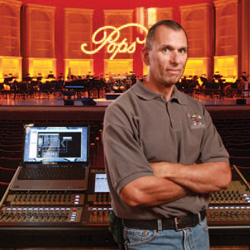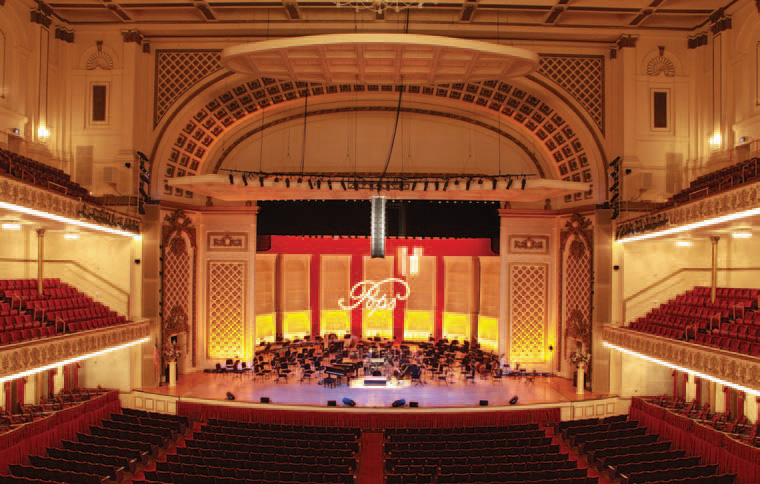
The result, Stumpp notes, is the ability to sustain an even wave for a longer period, thereby significantly extending the line array’s near field in the higher frequency range.
There’s a whole lot more to this concept, with plenty of details available on the COHEDRA website.
While LaRocco and Kunzel both wanted to bring COHEDRA to their Pops venues in Cincinnati, the funding to make it happen simply wasn’t available until this year.
However, they stayed in contact with Stumpp, continuing to plan and refine the design, with HK Audio technical personnel also paying visits to both Riverbend and Music Hall to perform evaluations and measurements.
This leads to another interesting facet of the project, in that the same system is utilized for both venues – and two more different performance spaces would be tough to find.
Music Hall, completed in 1878, offers superior natural acoustics, and in fact is noted as one of the best sounding rooms in the U.S.
On the other hand, while Riverbend was originally built for the symphony about 25 years ago, it’s still an outdoor amphitheater with a metal roof, backed by a lawn that takes capacity to more than 20,500.

Essentially, the system design team determined that commensurate performance and coverage in both places could be attained through careful array configuration and placement.
Combined, of course, with LaRocco’s ability to construct appropriately tailored mixes.
“Regardless of the venue, my goal is for it to sound the same in the house as it does at the podium, to take what is happening there and extend it as naturally as possible throughout the audience,” he says.
“There must be no color, no bite – every string and wind instrument must sound like they should, and nothing else. We must hear the instruments, and the fullness of it all, the complete ensemble, and every part in its appropriate place relative to the composition.”
At Riverbend, arrays of 12 COHEDRA CDR 208 S/T (dual-8, single- 1.4) elements are flown to each side of the very wide stage proscenium, with a center array of 6 more CDR 208 S/T elements flown at the center. The side arrays are each joined by lines of 4 CDR 210 F dual-10 subwoofers.
Three more COHEDRA COMPACT (single-8, dual-1) CDR 108C arrays of four units each flown from catwalks at about the midpoint of the house, on delay, extend coverage to the rear of the fixed seating, and then the existing lawn system takes it all the way to the back.
The system also includes 8 more CDR 210 subs to be deployed when needed, and placed where LaRocco wants them, depending on the specific needs of a production.
“I’m really happy with the performance of the flown subs.
But when we present concerts featuring selections from modern Broadway shows, such as Wicked, we want to fill it out a bit more on the low end,” he explains.
“There isn’t a need for a lot, but the ability to put more kick drum in the presentation is welcome, so that it feels as big as it should be.”

